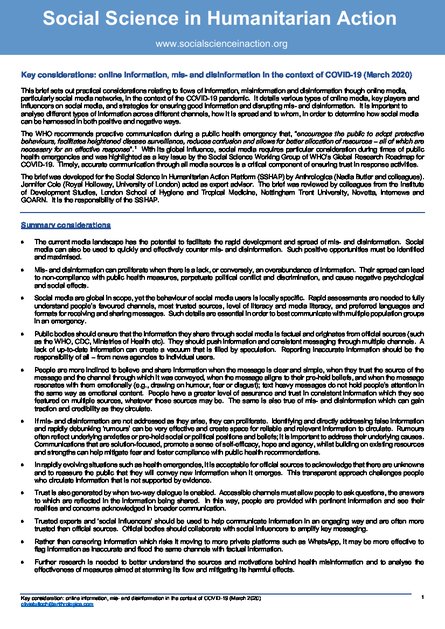
This brief sets out practical considerations relating to flows of information, misinformation and disinformation though online media, particularly social media networks, in the context of the COVID-19 pandemic. It details various types of online media, key players and influencers on social media, and strategies for ensuring good information and disrupting mis- and disinformation. It is important to analyse different types of information across different channels, how it is spread and to whom, in order to determine how social media can be harnessed in both positive and negative ways.
The WHO recommends proactive communication during a public health emergency that, “encourages the public to adopt protective behaviours, facilitates heightened disease surveillance, reduces confusion and allows for better allocation of resources – all of which are necessary for an effective response”. With its global influence, social media requires particular consideration during times of public health emergencies and was highlighted as a key issue by the Social Science Working Group of WHO’s Global Research Roadmap for COVID-19. Timely, accurate communication through all media sources is a critical component of ensuring trust in response activities.
The brief was developed for the Social Science in Humanitarian Action Platform (SSHAP) by Anthrologica (Nadia Butler and colleagues). Jennifer Cole (Royal Holloway, University of London) acted as expert advisor. The brief was reviewed by colleagues from the Institute of Development Studies, London School of Hygiene and Tropical Medicine, Nottingham Trent University, Novetta, Internews and GOARN. It is the responsibility of the SSHAP.
